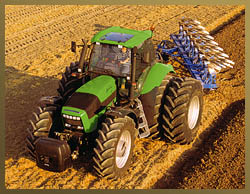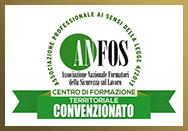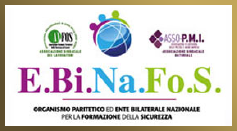




Risk assessment
Risk assessment and the preparation of the consequent documents is one of the most important elements
of the Legislative Decree 81/2008. Indeed it is the fundamental cornerstone of the new philosophy of
worker safety which sees the employer as the protagonist in accident prevention.
All employers, regardless of the number of employees or sector of work of their business, are required
to assess risks in the work performed in the workplace.
The term "risk assessment" refers mainly to the identification of possible sources of danger to the
health and safety of workers, the identification of workers potentially exposed to risk and the
assessment of the extent of exposure.

Risk assessment methods and criteria must first of all distinguish acceptable conditions from
unacceptable situations. Assessment methods may include even inductive, semi-quantitative or more
complex analytical procedures.
The determination of preventive and protective measures is of fundamental importance. To arrive at
them, appropriate times and methods congruous with the assessment of the gravity of the risk must
be chosen.
Keeping in mind that it is unacceptable to allow dereliction of precise requirements of the law to
persist, additional organizational and procedural measures will have to be defined in order to foresee
to the control and reduction of risk in the interim period between its determination and the actual
enactment of the technical solution.
Risk assessment is thus a complex operation that requires, for each work environment or workplace in
consideration, a series of successive and consequent operations which must provide for:
- Identification of potential hazards inherent in the production process;
- Identification of the risk of exposure in relation to performance of the production process with regard to the health and safety of the workers;
- Assessment of the degree of exposure to risk.
Risk assessment is developed in a general document and in specific assessments (fire hazards, exposure
to harmful chemicals, noise, vibrations, heavy charges, repetitive motion, work-related stress, etc.).
The general document contains a description of the method and tools used in risk assessment, a detailed
description of the company organization, and a plan of corrective and preventive actions and protection
measures to be applied.

Aurigi studio is a Bologna Confagricoltura consultant for risk assessment and assumption of roles as
Health and Safety Manager (RSPP) for member farm businesses.
Workplace health and safety management models
Aurigi studio assists businesses in getting certified according to BS OHSAS 18001:2007 regulations,
workplace health and safety management systems and in implementing a workplace health and safety
management model according to INAIL guidelines.
Said models are effective in exempting companies of administrative responsibilities foreseen by
Legislative Decree 231/01 for workplace health and safety offences.
OT 24 Model Tax Relief
The studio writes up the paperwork for requests of Inail tax reduction for virtuous companies
regarding workplace health and safety.
Training
Professional Agronomist Maurizio Aurigi is a qualified instructor under Ministerial Decree 06/03/2013
according to the criteria 1-2-3-4-5-6 subjects 1 and 2 and works at the following training centers:
- Dinamica in Bologna and Modena
- I.I.P.L.E. - Bologna
- Futura S.c.a.r.l.
- Confagricoltura - Bologna
- Training directly for private clients
Local accredited training centers ANFOS ed EBiNaFoS


Thanks to the accreditation with Anfos (National Association of workplace safety instructors) and
Ebinafos (Joint organism and bilateral body for safety training) the Aurigi Studio is qualified to
provide all types of training courses on workplace safety.
Course for workers:
- Low risk (8 hours)
- Medium risk (12 hours)
- High risk (16 hours)
Course for tractor drivers:
- Base (3 hours of theory, 5 hours of practice on tractors with wheels, 5 hours of practice on)
- Updating course (4 hours)
Course for fruit picking cart operators:
- Base (4 hours of theory, 5 hours of pratice)
- Updating course (4 hours)
Course for cherry-picker operators:
- Base (4 hours of theory, 5 hours of pratice)
- Updating course (4 hours)
...and other courses.
My articles and publications
Download area
- Legislative Decree 81/08 – Consolidated Act regarding workplace safety, integrated with Leg. Decree 106, 3 August 2009.
- Workplace Safety (from the Agricoltura supplements no. 23 of the Emilia-Romagna Region).
- INAIL guidelines for a workplace health and safety management system.
Links
- MULTISICURAGRI - Sicurezza nelle aziende agricole
- Regione Emilia Romagna - Sicurezza sul lavoro nelle aziende agricole
- Confagricoltura Bologna
Videos
Designed by MB Network srl © 2009-2022